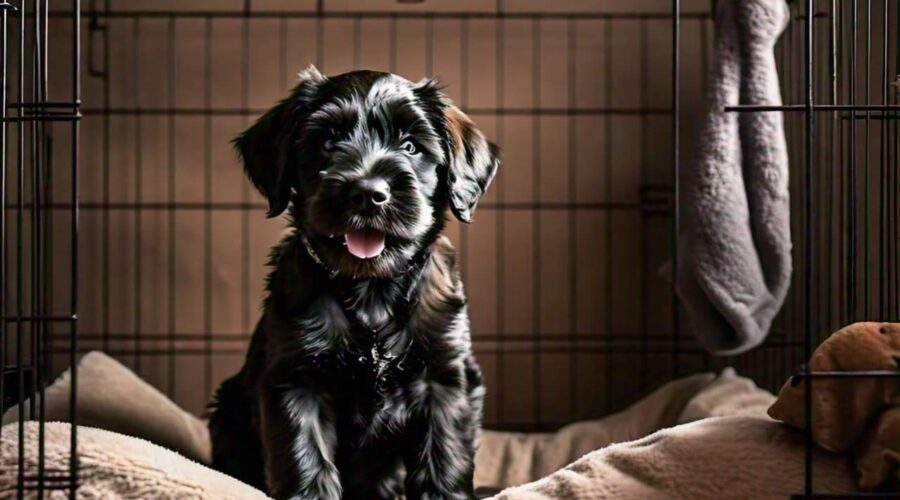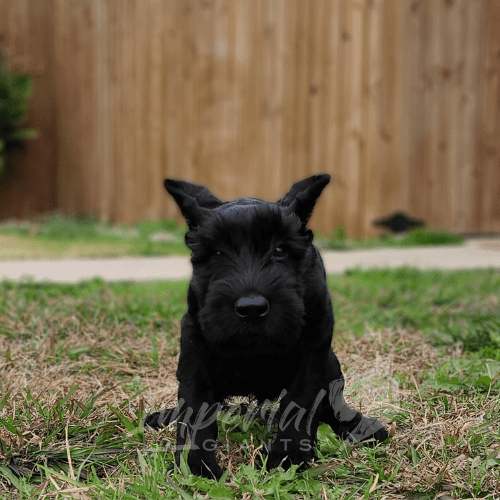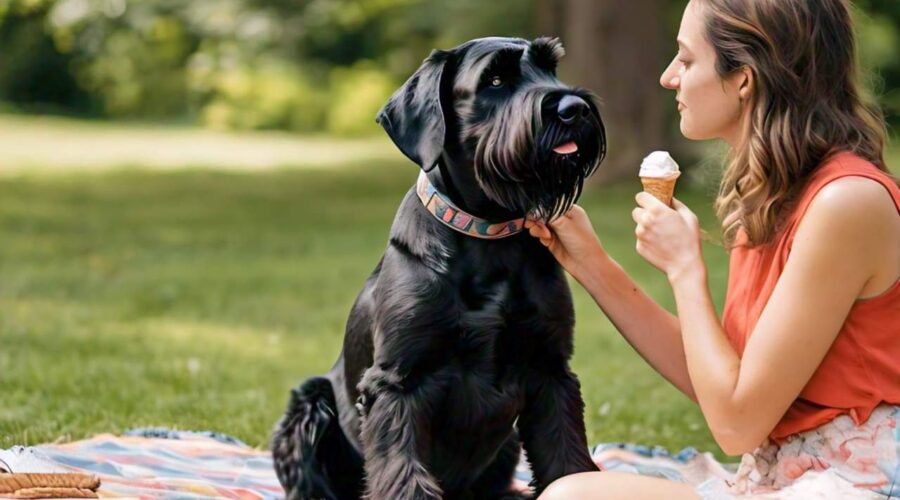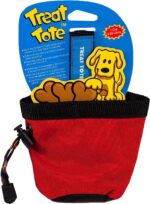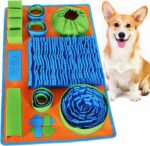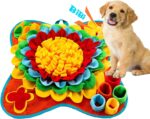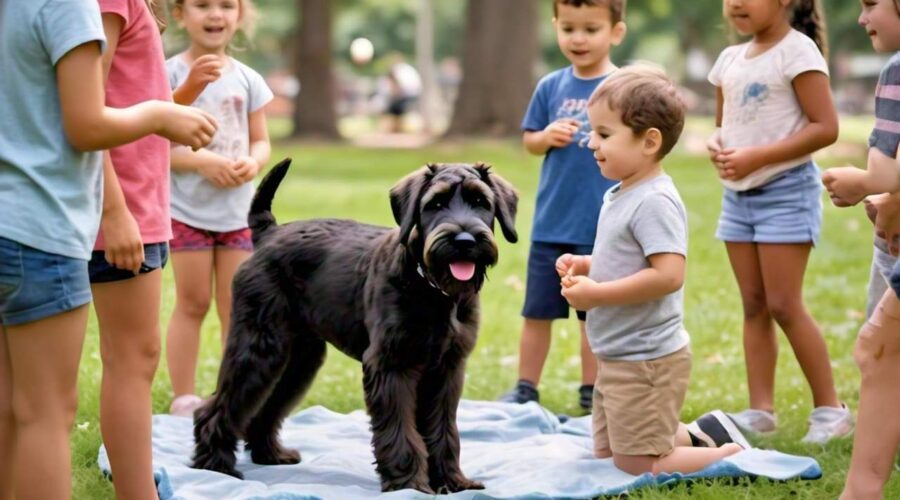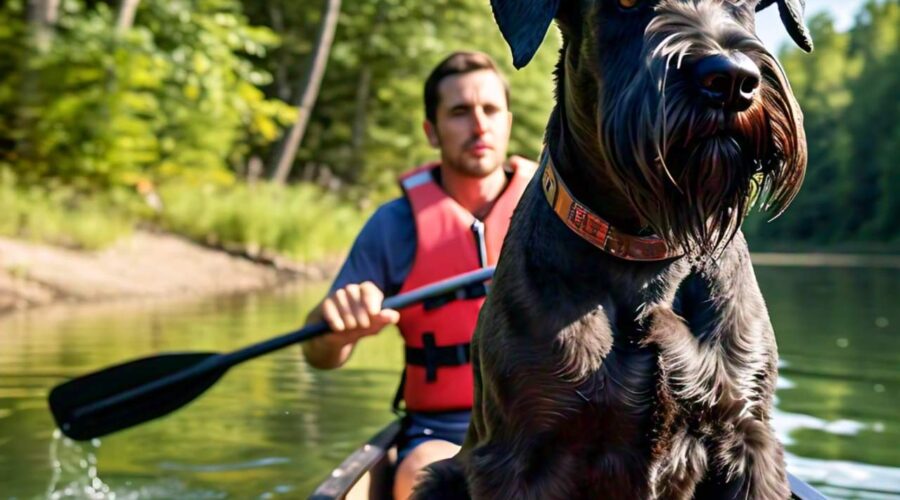Mastering Puppy Potty Training: Expert Tips On How To Train In 7 Days
I. Introduction
Potty training: because who doesn’t love waking up at 3 a.m. to the sweet symphony of puppy whimpers and the delightful aroma of surprise gifts waiting to be discovered in the living room?INSERT LAUGHING EMOJI. Ok all jokes aside let’s get to the blog. Beginning the journey of housebreaking a new puppy is a significant aspect of inviting a furry companion into your household. It goes beyond merely avoiding messes; it involves instilling appropriate behaviors that benefit both you and your pup in the long term. Effective puppy potty training necessitates maintaining a consistent routine, practicing patience, and implementing a well-structured plan. Set realistic expectations for the puppy and do not get discouraged by the odd mistakes or regression. Keep in mind, the rule of thumb is a puppy can only hold its bladder for 1 hour for every month old it is. Setting alarms throughout the night will give your puppy enough opportunities to avoid making mistakes which prevents developing bad habits.
II. Equipment and Preparation
Before embarking on the housebreaking journey, ensure you have all the necessary tools at your disposal. Items such as collars, leashes, doorbells, treats for positive reinforcement, a size appropriate crate and cleaning supplies for managing accidents are essential. Remember to clean up mistakes right away to avoid returning and resoiling the area. Designating a specific area for potty training, based on your puppy’s habits, aids in setting up successful training sessions.
III. Potty Training Techniques
Establishing a solid foundation for housebreaking starts with effective management strategies. Begin by keeping your puppy tethered to you or a specific area under constant supervision. Utilizing confinement in a crate when unsupervised helps prevent accidents and teaches bladder control. Crate training not only prevents your puppy from ruining your expensive rug but it also provides a safe and comfortable place for them to relax. When left unsupervised, even for a split second, puppies are masters at getting into things that can be very dangerous to them. Crate training not only protects your puppy from getting into something dangerous but also protects those brand new shoes that your kids conveniently “forgot” to store away after a mere ten reminders. Because who needs intact footwear anyway, right?
Make sure the crate is only big enough for the puppy to be able to stand up and turn around comfortably. If the crate is too big, they will be able to soil one side and move to the other. We suggest purchasing a cheaper crate in the beginning or a wire crate with a divider. Once the puppy is potty trained you may purchase one that is size appropriate for when they are full grown. When not in the crate, supervision plays a vital role during potty training sessions. Immediately after the puppy comes out of the crate it must be taken outside. Prioritizing your puppy’s potty break before your morning coffee is like investing in peace of mind and a cleaner carpet all in one go. Because starting your day with a mess just isn’t anyone’s cup of tea…or coffee! Keep a keen eye on your puppy’s behavior for any potty signals, such as sniffing, circling, or heading to the designated potty area.
Developing a successful potty break routine involves taking your puppy out consistently, using a leash, providing a brief window for them to relieve themselves, and offering praise and treats for successful potty trips. Repeating these sessions throughout the day, particularly after meals, playtime, and naps, reinforces desired behaviors and accelerates the training process.
IV. Troubleshooting and Frequently Asked Questions
Despite best efforts, potty training may encounter obstacles. Understanding common challenges and their solutions is vital for a successful training experience.
- Addressing Regression: It’s not uncommon for puppies to experience setbacks in their housebreaking journey due to stress, changes in routine, or medical issues. Identifying the underlying cause and re-establishing a consistent training routine aids in overcoming this hurdle.
- Usage of Potty Training Sprays: Some pet owners opt for potty training sprays to attract puppies to designated areas. While these can be effective for some, it’s crucial to monitor your puppy’s reaction and adjust accordingly.
- Training Duration: The time required for full housebreaking varies based on factors such as breed, temperament, and consistency in training. While some puppies may grasp concepts quickly, others may need more time and patience.
- Self-Training: While dogs can learn through observation and repetition, they still require guidance and reinforcement from owners. Consistent training, positive reinforcement, and clear expectations are crucial for success.
V. Long-Term Success and Maintenance
Maintaining success with housebreaking requires ongoing effort and reinforcement of desired behaviors. Gradually transitioning from indoor to outdoor potty habits, adhering to a regular feeding schedule, monitoring water intake, and using appropriate cleaning products for accidents contribute to long-term success.
VI. Additional Tips and Resources
For additional support and guidance, consider enrolling in structured training programs or reach out to your breeder. Success in housebreaking ultimately hinges on consistency, patience, positive reinforcement, and a deep understanding of your puppy’s needs and behaviors.
VII. Conclusion
In conclusion, achieving mastery in puppy housebreaking necessitates dedication, consistency, and understanding. Implementing the principles outlined in this guide sets the stage for success and fosters a harmonious environment for both you and your puppy. Remember the key principles of consistency, patience, positive reinforcement, and attentive supervision throughout your housebreaking journey for a clean and happy home environment.
FAQs
- How long does it take to fully potty train a puppy?
- The time required for full housebreaking varies based on factors such as breed, temperament, and consistency in training. While some puppies may grasp concepts quickly, others may need more time and patience. On average, most puppies can be fully trained by six months of age, but individual timelines may vary.
- Can dogs train themselves to potty without guidance?
- While dogs can learn through observation and repetition, they still require guidance and reinforcement from owners. Consistent training, positive reinforcement, and clear expectations are crucial for success.
- What should I do if my puppy starts regressing in potty training?
- It’s not uncommon for puppies to experience setbacks in their housebreaking journey due to stress, changes in routine, or medical issues. Identifying the underlying cause and re-establishing a consistent training routine aids in overcoming this hurdle.
- Is it necessary to use potty training sprays?
- Some pet owners opt for potty training sprays to attract puppies to designated areas. While these can be effective for some, it’s crucial to monitor your puppy’s reaction and adjust accordingly based on their response.
Pawsitive Training: Creating a Strong Bond with Your New Pup
Introduction: Welcoming Your New Best Friend
Congratulations on the newest addition to your family – your adorable, tail-wagging bundle of joy! As a passionate dog lover and professional trainer, I understand the mix of excitement and apprehension that comes with bringing home a new puppy. That’s why I’m here to guide you through this exhilarating journey with practical tips, expert advice, and a sprinkle of humor.
From those first heart-melting cuddles to the inevitable chewed-up shoe mishaps, we’ll cover everything you need to know to ensure a smooth transition for both you and your furry friend. Whether you’re a seasoned puppy parent or diving into this adventure for the first time, there’s always something new to learn in the world of canine companionship.
So, grab a cozy spot, cuddle up with your pup, and let’s embark on this exciting new chapter together. Your new best friend is counting on you, and I’m here to help make sure every wagging tail and sloppy kiss brings you endless joy.
Let’s dive in and make memories that will last a lifetime – paws and all!
Establishing a Positive Training Routine: Setting Your Pup Up for Success
As a professional dog trainer who’s seen it all (from pups who think ‘sit’ means ‘spin in circles’ to masters of mischief plotting their next shoe heist), I can assure you that establishing a positive training routine is the secret sauce to a well-behaved canine companion. Now, I know it’s tempting to let your new furry friend run amok and explore their wild side (cue the zoomies and toy tornadoes). But trust me, investing time upfront in training pays off in spades down the line.
Picture this: a pup who knows the difference between ‘come here, buddy’ and ‘please stop eating the sofa,’ and responds with a tail wag and a goofy grin. That’s the magic of positive reinforcement training – making learning fun and rewarding for your pup while strengthening your bond. So, let’s roll up our sleeves (or maybe just wipe off those paw prints) and dive into creating a training routine that’ll have your pup begging for more (treats, that is).
Teaching Basic Commands and Manners: Turning Your Pup into a Polite Pooch
Ah, the joy of teaching a pup the art of sitting, staying, and not treating your favorite shoes like chew toys. As someone who’s helped countless pups master these essential skills (and prevented a fair share of shoe casualties), I’m excited to share some tried-and-true tips for turning your furry tornado into a well-mannered companion.
First things first, let’s talk about the power of positive reinforcement. When your pup sits on command or greets guests without turning into a furry tornado of excitement, shower them with praise, treats, and maybe a victory dance (no judgment here). Positive reinforcement not only makes learning fun for your pup but also strengthens the bond between you.
Now, onto the basics – sit, stay, come, and heel. These commands aren’t just for show; they’re lifesavers in everyday situations. Imagine confidently calling your pup back to you on a busy street or having them wait patiently at the door instead of barging through like a furry bulldozer.
And let’s not forget about curbing those unwanted behaviors like jumping up on guests or treating your couch like a trampoline. With consistent training and a sprinkle of patience, you can teach your pup that good manners open doors (literally and figuratively).
So, grab your treats, cue the training playlist (yes, that’s a thing), and let’s transform your pup into the ultimate polite pooch. It’s a journey filled with tail wags, proud moments, and maybe a few laughs along the way.
Addressing Common Puppy Behavior Challenges: Navigating the Pup Parenthood Rollercoaster
Welcome to the wild and wonderful world of puppy parenthood, where every day brings new surprises (and occasionally, chewed-up surprises). As a seasoned pup whisperer who’s seen it all, I’m here to guide you through some of the most common behavior challenges and share strategies to tackle them like a pro.
Let’s start with the infamous puppy biting and nipping phase. Those razor-sharp teeth may seem like tiny daggers aimed at your patience, but fear not – redirection and consistent training can work wonders. Encourage appropriate chewing with chew toys and teach your pup that fingers are off-limits (unless they want a tasty treat, of course).
Next up, the art of chewing everything except their designated toys. It’s a classic move in the puppy playbook, but with a bit of strategic toy placement and a sprinkle of deterrents, you can protect your belongings while satisfying your pup’s chewing needs. The easiest way to avoid chewing is to only allow them out of the crate while they are under direct supervision. If you will be distracted, grab a leash and tether them to your body. That way they wont be able to sneak away and get into trouble.
Now, let’s talk about separation anxiety – the struggle is real for both pup and parent. Crate training can be a game-changer here, providing a safe haven for your pup and peace of mind for you. Practice short departures and arrivals, keep greetings low-key, and gradually extend alone time to help your pup feel more secure.
Remember, every pup is unique, and what works for one may not work for another. Stay patient, stay consistent, and don’t hesitate to reach out for professional support (hint: that’s where I come in). Together, we’ll navigate the ups and downs of puppyhood and emerge with a well-behaved, happy pup by your side.
Keeping Your Puppy Mentally and Physically Stimulated: Unleashing Your Pup’s Inner Genius
The boundless energy and curiosity of a new puppy – it’s like having a tiny explorer with a wagging tail and a nose for adventure. Let’s start with mental stimulation. Puppies are sponges for learning, so why not make it fun? Interactive toys, puzzle feeders, and training games are fantastic tools to challenge their brains and prevent boredom-induced mischief. Plus, it’s a great way to bond with your pup over a shared love of problem-solving.
Now, onto the physical side of things. Puppies have energy to spare, and it’s essential to channel that enthusiasm into constructive activities. Whether it’s a game of fetch, a tug-of-war showdown, or an agility course in the backyard, regular exercise is key to a happy, healthy pup.
But here’s the secret sauce – finding the right balance. Every pup is unique, with different energy levels and preferences. Pay attention to your pup’s cues and tailor their playtime and training to suit their needs. A tired pup is a content pup, ready for snuggles and maybe a well-deserved nap.
So, let’s embark on this adventure together, unlocking your pup’s full potential and creating a lifetime of cherished memories. With a mix of mental challenges, physical activities, and plenty of love, you’ll have a happy, well-rounded pup by your side, ready to take on the world (or at least the backyard).
Conclusion: Enjoy the Journey of Raising Your Pup
Congratulations again on embarking on this exciting journey of raising a new puppy! As a professional trainer with a passion for nurturing well-behaved and happy dogs, I’m thrilled to share these insights with you.
Remember, training a new puppy takes dedication and patience, but the bond you’ll build and the joy they’ll bring to your life are absolutely worth it. Don’t hesitate to add your own personal touches to the training process – every pup is unique, and tailoring your approach to their individual needs is key.
If you ever need additional guidance or support, whether it’s mastering basic commands or addressing behavior challenges, I’m here to help. Feel free to reach out with any questions or share your puppy training successes – I love hearing from fellow dog lovers!
Together, let’s make sure your new furry friend grows into a well-rounded, happy, and well-behaved companion. Enjoy every moment of this special journey, and remember to celebrate the milestones along the way. Here’s to many years of wagging tails, sloppy kisses, and unforgettable memories with your beloved pup!
Dos And Don’ts Of Bonding With Your New Puppy
Introduction
So, you’ve taken the plunge into puppy parenthood – congratulations! Get ready for a rollercoaster of cuddles, chaos, and countless heart-melting moments. In this guide, we’ll dive into the secrets of bonding with your furry sidekick while maintaining your authority (and sanity).
Bonding with your new puppy is crucial for their healthy development and your lifelong relationship. In the first few months of a puppy’s life, they go through a critical socialization period where they are highly receptive to new experiences. This is the ideal time to introduce your puppy to new people, animals, sounds, and environments in a positive way.
Spending quality time with your puppy, such as playing, training, and cuddling, helps build trust and a strong emotional connection. Consistent, reward-based training not only teaches your puppy good manners, but also reinforces that you are a source of good things. This lays the foundation for your puppy to view you as a leader they want to please.
Properly socializing and bonding with your puppy during this formative period helps prevent behavior problems down the line. A well-adjusted, confident puppy is more likely to grow into a well-adjusted, confident adult dog. Investing time in your puppy now will pay dividends for years to come in the form of a loyal, loving companion.
The Art of Bonding: Why It’s Essential
Bonding with your new pup isn’t just about cozy cuddles (although those are pretty great). It’s about setting the stage for a lifelong friendship built on trust and understanding. During their puppyhood, these little furballs are like sponges, soaking up experiences and forming opinions about the world.
Paw-some Activities for Bonding
1. Puppy Playtime: Think of it as your daily dose of laughter therapy. Grab a squeaky toy, engage in a game of tug-of-war, or just let loose and chase each other around the house. It’s exercise disguised as fun! Set aside 10-15 minutes a few times a day for unstructured play. Use interactive toys like balls, squeaky toys, or tug ropes to encourage your puppy to run, jump, and interact with you.
2. Trick Training: Show off your teaching skills by introducing simple tricks like “sit,” “stay,” and “high five.” Teach your puppy using positive reinforcement like treats and praise. The process of learning builds trust and engagement.
3. Hide and Seek: Who says this game is just for kids? Hide behind furniture or in closets, then revel in your pup’s sheer delight as they track you down. Bonus points if they find you before you can finish counting. Reward them with affection and a treat when they locate you. This game builds their seeking skills.
4. Obstacle Course: Transform your living room into an obstacle course using pillows, chairs, and tunnels made of blankets. It’s like Ninja Warrior, but with more wagging tails. Create a simple indoor obstacle course using household items. Guide your puppy through the course, rewarding them at each step. This stimulates their mind and body.
5. Grooming Bonding: Turn grooming sessions into pampering parties. Brushing, nail trimming, and bath time can be surprisingly enjoyable with the right treats and soothing words. This gets your puppy comfortable with handling.
Implementing these fun, effective activities on a regular basis will help you and your puppy build a strong, trusting relationship from the start.
Establishing Trust and Affection Through Consistent Interaction
As a new puppy owner, it’s important to understand the crucial role that consistent interaction plays in building trust and affection with your furry friend. Puppies have strong emotional needs and require attentive care to develop into well-adjusted, confident dogs.
One of the primary concerns with puppies is separation anxiety, which can arise when they feel insecure or disconnected from their owners. By engaging in regular playtime, training sessions, and affectionate cuddles, you can help your puppy feel safe, loved, and attached to you.
Consistent interaction also helps puppies learn appropriate behaviors and socialization skills. Through positive reinforcement and gentle guidance, you can shape your puppy’s conduct and foster a strong, lasting bond.
Remember, every puppy is unique, and their emotional needs may vary. Paying close attention to your puppy’s cues and adjusting your approach accordingly will help you build a foundation of trust and affection that will last a lifetime.
The Dos and Don’ts of Bonding with Your New Puppy
Bringing home a new puppy is an exciting time, but it’s important to avoid common mistakes that can hinder the bonding process. Here are some dos and don’ts to keep in mind when bonding with your new furry friend:
DO:
– Spend quality time with your puppy each day, engaging in positive interactions like playtime, training, and cuddling.
– Introduce your puppy to new people, animals, and environments gradually to help them feel safe and secure.
– Pay attention to your puppy’s body language, such as ear position, tail wagging, and eye contact, to understand their comfort level.
– Reinforce good behavior with treats and praise to build trust and encourage desired actions.
DON’T:
– Overwhelm your puppy with too much stimulation or interaction, as this can lead to stress and fear.
– Punish your puppy for accidents or mistakes during the housetraining process, as this can damage the bond.
– Neglect your puppy’s basic needs, such as providing a comfortable living space, a nutritious diet, and regular exercise.
– Ignore signs of distress or discomfort, as these may indicate underlying issues that need to be addressed.
By following these dos and don’ts, you can help your new puppy feel safe, secure, and loved, laying the foundation for a strong and lasting bond.
Creating a Lifelong Bond: Why Bonding with Your Puppy Matters
Bonding isn’t just about teaching tricks and sharing Instagram-worthy moments (although those are definitely perks). It’s about nurturing a confident, well-adjusted companion who brings joy to your life every day. The bond you build with your puppy during these early months can have a profound impact on their behavior, training, and overall well-being.
Puppy training and socialization are essential for preventing behavior problems down the line. By investing time in bonding with your puppy, you’re setting them up for success. A strong bond encourages better communication, trust, and responsiveness during training sessions. Puppies who feel securely attached to their owners are more likely to be well-adjusted, confident, and eager to please.
Beyond training, a close puppy-owner relationship also supports your pup’s mental health. Puppies that don’t receive enough positive interaction and affection can develop anxiety, fear, and other issues. By making time for play, cuddles, and quality one-on-one time, you’re nurturing your puppy’s emotional needs and helping them grow into a happy, well-adjusted dog.
Establishing a lifelong bond with your puppy takes consistency and patience, but the rewards are immeasurable. With the right training techniques and a commitment to building that special connection, you and your furry friend will be on your way to a lifetime of love and companionship.
Conclusion: Embrace the Joy of Bonding with Your New Furry Friend
Welcoming a new furry friend into your life is an exhilarating journey filled with love, learning, and laughter. As you embark on this adventure, remember that each moment of bonding is precious and contributes to a lifelong companionship that is deeply rewarding.
Take the time to engage in playful activities, gentle training sessions, and affectionate moments with your puppy. Capture these moments through photos and videos to cherish the memories forever. Share your experiences with fellow pet lovers and seek guidance when needed to ensure a happy and healthy bond with your furry companion. Celebrate every milestone, from the first successful trick learned to the heartwarming cuddles shared on lazy afternoons. Your journey with your new furry family member is unique and special, filled with endless opportunities for growth and joy. Embrace the journey wholeheartedly, and revel in the incredible bond you’re building—one pawprint at a time.

